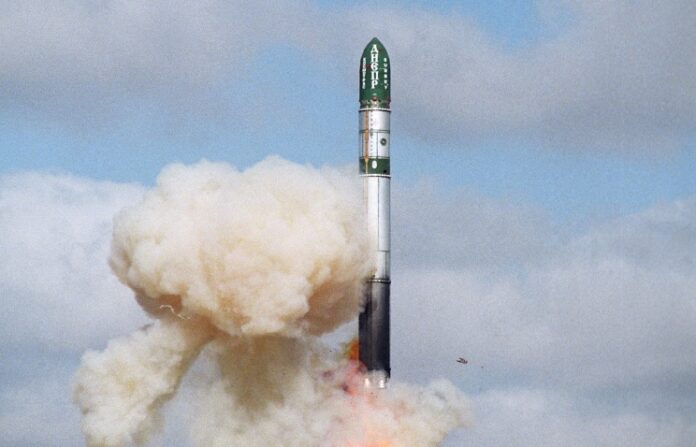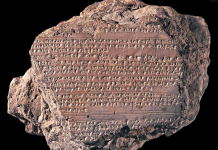R-36 is the world’s largest and most dangerous Intercontinental Ballistic Missile (ICBM) ever built. And it is solely Ukraine’s know-how. Highly accurate guided missiles housed in silos. The works started in 1962 in the Ukrainian city of Dnipro (former Dnipropetrovsk) and the first rockets were tested in 1970. The later version, the R-36M, received the NATO reporting name SS-18 Satan. The final (Mod-6) modification, R-36M-2 “Voevoda” deployed in August 1988 could deliver an 18–20 Megaton (Mt) warhead at a distance of 16,000 km., making it the heaviest and the world’s longest-range missile.
Its liquid rocket engines provide a speed of about 7.9km/sec. and make it possible to reach the American continent in roughly 20 minutes. The majority of military experts view this rocket as the most dangerous of all in the world because its characteristics include rapid silo-reload ability, extra heavy throw weight, and very large number of re-entry vehicles. Some versions of the R-36M were armed with 10 warheads and up to 40 penetration aids.
10 independent, 750 kiloton nuclear warheads, each had more than 40 times the destructive power of the bomb that destroyed Hiroshima. For comparison, the US contemporary rival to R-36M, the Minuteman III, could carry up to three warheads at most at the time.
The American administrations in the 80s and 90s made the Ukraine-engineered missiles the main focus of their arms control initiatives. The START II Treaty (Strategic Arms Reduction Treaty) specifically foresaw banning land-based Multiple Independently Targetable Reentry Vehicles (MIRV) systems, mostly because of the threat the SS-18 posed to the balance of power.
Since SS-18 was Ukraine’s know-how, it was only Ukraine, who produced and serviced these rockets for the whole Soviet Union.
When the Soviet Union disintegrated and Ukraine signed the Budapest Memorandum, it stopped producing these rockets but continued servicing the ones in Russia’s arsenal.
As for some remaining missiles in its possession, Ukraine refurnished them into the Dnepr Space Rocket and used them to launch into space. The first launch took place on April 21. 1999 with 21 more that followed.
With the start of Russia’s aggression against Ukraine in 2014, Ukraine quit servicing the missiles which still constituted a very significant part of Russia’s nuclear shield.
According to the Jamestown Foundation, ‘Russian ICBMs: An Aging but Mixed Arsenal’ publication as of October 25, 2017, there were 46 SS-18 Satan missiles left in Russia, and Russian facilities could not cope with upkeeping them without access to the missile’s design documentation stored in Ukraine.
Russia tried hard to replace the R-36M with its new heavy ICBM, the RS-28 Sarmat. So far, this missile dubbed by NATO “SS-X-30 “Satan-2” has seen numerous delays.
It is this very nuclear missile Putin tried to scare the USA with during his public address on March 1, 2018, but made a laughing matter of himself by showing a 10-year-old clip with animation about Ukrainian Voevoda mentioned above.
Sep. 22, 2024 UPDATE: Russia’s Sarmat nuclear ballistic missile has had six failed test launches since June 2024 – Global Defense Corp










